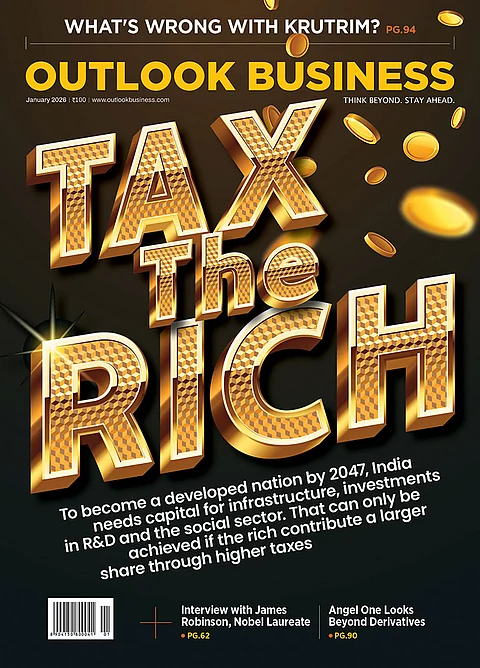In May, with barely a whisper, Britain’s Labour government scrapped a plan that would have saved 1.5bn pounds in public funds. The idea was simple, sensible and on paper, undramatic: means-test winter fuel payments so that only pensioners earning under £35,000 would qualify. In a country buckling under record debt interest payments and stretched public services, it seemed a modest step towards fiscal sanity.
But then came the backlash-from pensioner lobbies, from tabloids. Within days, the government folded. Nine million households will now receive up to £300 in fuel assistance this winter regardless of income, need or logic.
This was no mere policy hiccup. It was a symptom of something deeper, more corrosive and far more familiar: the growing inability of ageing democracies to govern for the future. Across Europe, North America and parts of Asia, attempts to trim entitlements or rebalance spending are met with swift, punishing backlash. Politicians promise reform. Voters revolt. Politicians retreat.
We are living in the age of the gerontocratic veto a silent, unstoppable force where the preferences of older voters block structural reform at every turn. It’s not loud. It’s not violent. But it’s everywhere. And it’s quietly rewriting the rules of fiscal politics—in Delhi as much as in London.
From Grey Power to Policy Paralysis
In ageing societies, the arithmetic of power has shifted. The UK’s population is also ageing—around one-fifth (19%) was aged 65 or over in 2019 or approximately 12.3mn people. This older population is projected to grow, with those aged 65 and over expected to make up 24% of the population by 2043 (17.4mn people).
In the UK, electoral participation is skewed by age, with older voters turning out at significantly higher rates than younger cohorts. During the 2019 general election, 74% of those aged 65 and over cast a ballot, compared to just 47% of 18–24-year-olds. This gap represents the widest turnout differential by age since such estimates began in 1979.
The overall national turnout was 67.3% but it was disproportionately driven by older voters, whose consistent participation has become a defining feature of UK electoral dynamics. This disparity has significant implications: as turnout rates among older voters remain high and stable, their preferences increasingly shape public policy—particularly in areas like pensions and healthcare—while the voices of younger citizens remain underrepresented in political outcomes.
This translates into formidable political leverage. Parties of all ideological stripes now campaign as defenders of entitlements. Any effort to trim, target or reform benefits—however modest—is immediately branded as an attack on dignity or worse, an abandonment of the welfare state.
Case Studies in Veto Politics
Britain is not alone. In France, President Emmanuel Macron’s 2023 attempt to raise the retirement age from 62 to 64 was met with mass protests, prolonged strikes and a near collapse in his approval ratings.
In Spain, efforts to index pensions to demographic and fiscal trends were quietly reversed ahead of the 2023 elections. In Japan, where over a third of government spending now goes to social security—mostly for pensions and elderly healthcare, public debt has soared to over 260% of GDP. But in global debate, the crisis seldom includes India. That needs to change. In the US, both parties pledge to protect Social Security and Medicare [US government programmes], even as insolvency nears.
The Congressional Budget Office projects that the Social Security trust fund will be depleted by 2033, triggering benefit cuts of 20–25%. Medicare Hospital Insurance fund faces a similar fate within a decade. Social Security alone is projected to run a $3.6trn deficit between 2025 and 2034, yet reform remains politically untouchable. India is still young—the median age is under 30 but it is ageing fast. As of 2023, around 11% of Indians were over 60; that share is projected to nearly double to about 20% by mid-century.
The United Nations Population Fund estimates that India’s elderly population (aged 60 and above) will grow from 153mn today to 347mn by 2050. By then, India will account for 17% of the world’s over-65s—nearly 340mn citizens.
This demographic shift comes at a cost. India’s public pension spending stood at 7.7% of GDP in 2022- far higher than in comparable emerging economies. The most vulnerable elderly—over 40% of whom belong to the poorest wealth quintile and nearly one-fifth have no independent income—face deep insecurity.
The political imperative to support them is growing. States are rolling out generous pension schemes, free transportation and subsidised meals targeted at older voters—interventions that may seem humane but shift long-term fiscal priorities. Emerging data suggests that youth unemployment among 15–24-year-olds in India is over 10%, while investment in health, housing and climate remains low.
If we remain passive, India could follow the hardened trajectories of Europe and Japan— where pension liabilities consume vast fiscal space, reform exports fall and youth suffer. But unlike those affluent nations, India lacks the cushion required for inertia.
Can Democracy Govern The Future?
The problem isn’t that democracies are ageing. It’s that they’re losing the structural capacity and political will—to think ahead. In the absence of forward-looking reform, the growing fiscal burden of ageing will crowd out investment in everything that sustains future prosperity: education, public health, infrastructure, climate resilience and affordable housing.
But resignation is not the only path forward. Solutions exist—and several are already working elsewhere.
Sweden and the Netherlands index pension benefits to life expectancy, ensuring demographic alignment with fiscal outlays. Germany enforces a constitutionally mandated “debt brake,” which caps structural deficits and forces governments to justify spending to future generations. Japan has introduced co-payment reforms in elderly healthcare. Canada and Ireland have piloted intergenerational citizen councils, ensuring young people's voices are formally represented in budget-making and pension policy.
India, while still a demographically young nation, has a narrow window to anticipate and act. Its current old-age dependency ratio of 10 is projected to double by 2050 and social sector expenditure will need to keep pace. If policy inertia continues, India risks importing the same fiscal sclerosis seen across ageing Organisation for Economic Co-operation and Development (OECD) countries— without having the economic buffer to absorb it.
Several Critical Interventions Are Now Essential
For countries like India and other lower- and middle-income democracies (LMICs), the urgency is even greater. Unlike ageing OECD states that expanded welfare before their populations grew old, most LMICs are entering demographic transition with weaker tax bases, fragmented safety nets and limited fiscal space. Yet, political pressure to deliver visible, short-term benefits particularly to older and reliable voting blocs is growing rapidly.
Several Reforms Are Now Imperative
First, pension systems must be restructured for breadth and sustainability. In India, the National Pension System (NPS) must be scaled with auto-enrolment, contribution incentives, and guaranteed return frameworks. Other LMICs— such as Nigeria, Bangladesh and Kenya—need to build hybrid systems that mix contributory and non-contributory models tailored for informal economies. Legacy pension schemes across the Global South must be revisited to introduce means-testing, inflation indexing and fiscal caps to avoid long-term liabilities spiralling out of control.
Second, fiscal frameworks must include intergenerational accounting. In India, the Fiscal Responsibility and Budget Management Act must be expanded to track not just annual deficits but long-term social liabilities. LMICs should follow suit, mandating disclosure of pension and healthcare commitments over the next 30–50 years. Such transparency enables more rational trade-offs and anchors public debates in reality, not rhetoric.
Third, public investment must be protected. LMICs urgently need constitutional or statutory floors that guarantee minimum investment in infrastructure, climate adaptation, education and health. These floors would prevent development budgets from being cannibalised by vote-driven entitlements, particularly in election years. Countries like Brazil and South Africa have already experimented with such mechanisms—others must follow.
Fourth, generational equity must be institutionalised. This means embedding demographic audits into public expenditure reviews similar to gender or social audits. These audits, led by budget offices or independent watchdogs, should assess who benefits and who pays across age groups. Countries can also establish Intergenerational Equity Commissions to evaluate major schemes through a long-term lens.
Fifth, youth participation must be designed into democratic architecture. Across LMICs, turnout among younger voters is consistently lower than among seniors. Governments must address this gap by institutionalising intergenerational participatory budgeting, especially in cities and regional governments. Citizen forums, like Kerala’s Ward Committees or Senegal’s participatory planning cells, can serve as scalable models.
These are not easy reforms. If India, Nigeria, Indonesia or Egypt wait until their age structures flip, the room for fiscal correction and institutional redesign will have closed. Democracies that cannot say no to yesterday will never be able to say yes to tomorrow.
The future doesn’t vote—yet. But in any democracy worth its name, it must still count.































